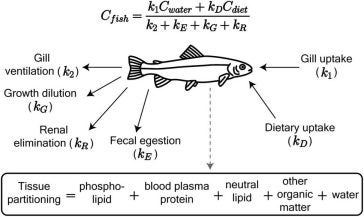 Per- and polyfluoroalkyl substances (PFAS) are linked to adverse health effects in humans and wildlife; these “forever chemicals” accumulate in the tissues of living organisms, called bioaccumulation. Dietary exposure is a main pathway of PFAS bioaccumulation in humans, and of particular importance is seafood ingestion. Some PFAS bioaccumulate in aquatic food webs, which introduces exposure risks to fishing communities and consumers who incorporate fish into their diet.
Per- and polyfluoroalkyl substances (PFAS) are linked to adverse health effects in humans and wildlife; these “forever chemicals” accumulate in the tissues of living organisms, called bioaccumulation. Dietary exposure is a main pathway of PFAS bioaccumulation in humans, and of particular importance is seafood ingestion. Some PFAS bioaccumulate in aquatic food webs, which introduces exposure risks to fishing communities and consumers who incorporate fish into their diet.
STEEP researchers at Harvard University and fellow collaborators recently developed and optimized an aquatic food web model to predict the bioaccumulation behavior of a suite of PFAS in fish and aquatic food webs. Their mechanistic model adapts and expands upon previous bioaccumulation models for fish and includes additional parameters such as PFAS partitioning to phospholipids and proteins, elimination of PFAS via renal function, updated PFAS properties relevant to PFAS absorption, and a simulation of PFAS bioaccumulation in a marine food web.
The reproducibility of the mechanistic model is successful when comparing model results to whole body fish tissue concentrations previously reported in earlier scientific studies. This research highlights details pertinent to understanding mechanisms of biological PFAS transport, such as PFAS protein binding and phospholipid partitioning. Models such as the one presented in this recent 2022 publication in Royal Society of Chemistry present new avenues in the approach to support risk assessment and aid in the development of fish consumption advisories for PFAS.
Read the full article: “A food web bioaccumulation model for the accumulation of per- and polyfluoroalkyl substances (PFAS) in fish: how important is renal elimination?” Sun, J., et al.

